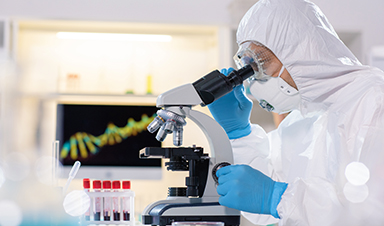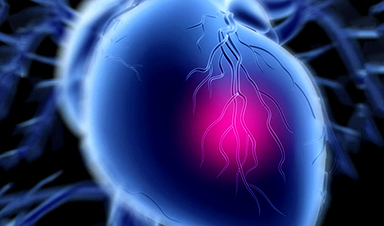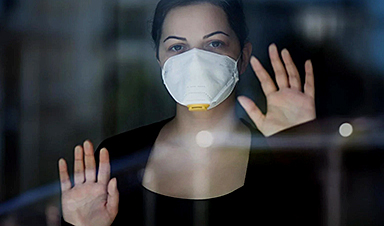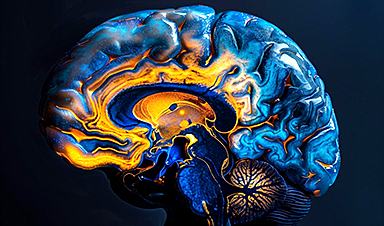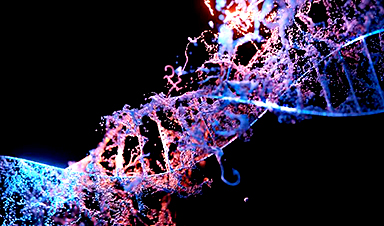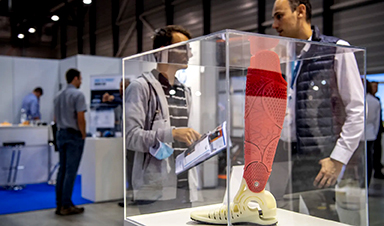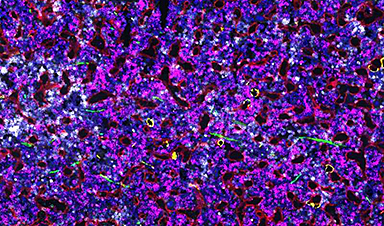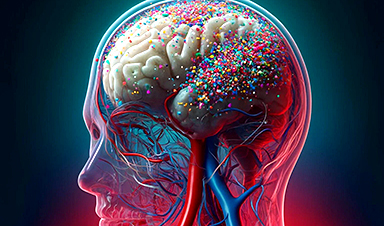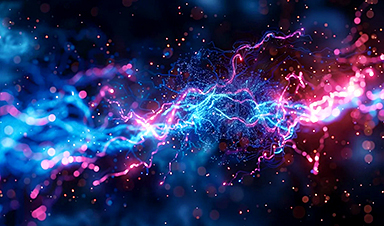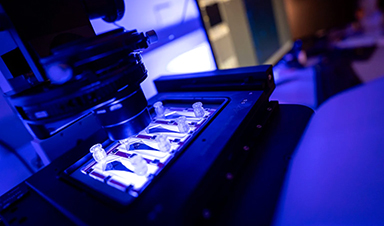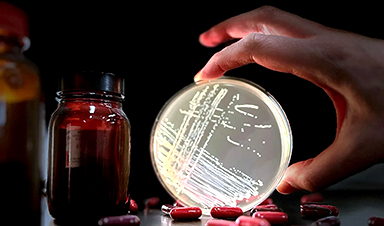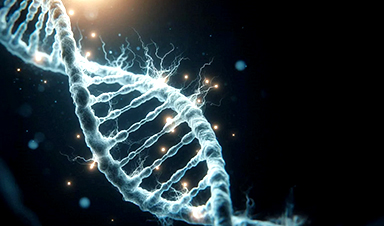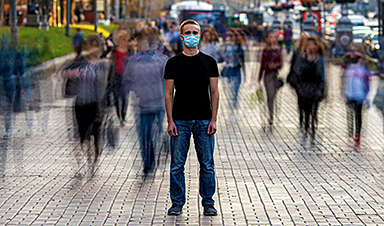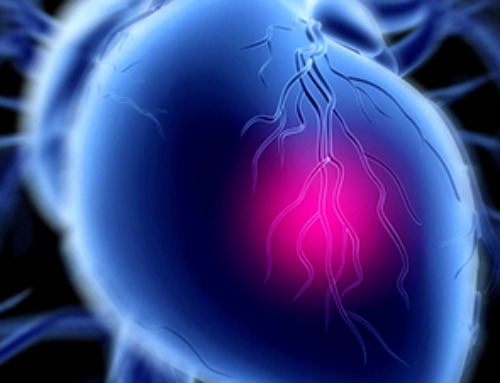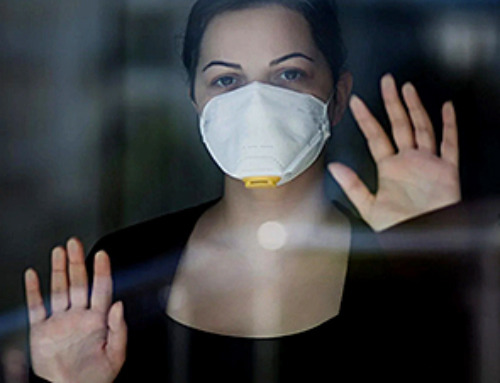Bioinspired by tunicates and mussels, a Korean research team has created a “bomb-like” anticancer therapeutic agent that only destroys cancer cells.
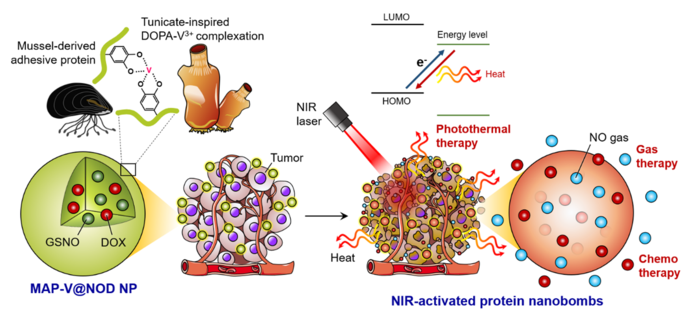
The nanobomb produces heat in precise sites where near-IR (NIR) laser is irradiated to create nitric oxide gas, which has an anticancer effect and concurrently discharges anticancer drugs to accomplish the trimodal treatment of photothermal-gas-chemo-therapy.
The POSTECH research team was headed by Professor Hyung Joon Cha and Dr. Yeonsu Jeong (Department of Chemical Engineering) in partnership with Professor Yun Kee Jo’s team at Kyungpook National University (Department of Biomedical Convergence Science and Technology, School of Convergence).
The researchers engineered a photoactivatable adhesive nanobomb with mussel adhesive proteins (MAPs) and the catechol-vanadium complex of tunicates that involves light-associated energy conversion through electron transfer. The term ‘photoactivatable’ denotes the characteristic where properties vary based on the external light.
Since cancer manifests via multiple biological pathways, a process that integrates several treatments rather than one single treatment is generally employed. But it is challenging to deliver several therapeutic agents at once to a particular cancer site because of the large amount of fluid found in the human body.
Among such approaches, light-triggered photothermal therapy (PTT) employs nanoparticles of metals, synthetic polymers or carbon. However, their weak biodegradability, which can cause a hazard of systemic toxicity, and low photothermal conversion efficiency — the efficiency at which the captured light is turned to heat — render effective cancer treatment tough.
To this, the researchers developed nanoparticles by incorporating the catechol-vanadium complexes — which help electrons and light travel in tunicates — to the MAP. When these nanoparticles are exposed to the light from NIR lasers, the temperature can be increased to 50 degrees within 5 minutes, displaying exceptional photothermal conversion efficiency of around 50%.
These nanoparticles can be retained on cancer cells for an extended period owing to the robust adhesiveness of MAP. Furthermore, the excellent biocompatibility and biodegradability of proteinic nanoparticles resolve the safety matter of traditional light-responsive nanotherapeutics.
When the nanoparticles comprising a thermo-sensitive nitric oxide (NO) donor and an anticancer drug were irradiated using the near-IR (NIR) laser, NO gas and drugs were effectively discharged due to the photothermal effect, verifying their likelihood for use in a nanobomb.
It is generally tough to retain the anticancer effects of NO gas as it rapidly biometabolizes. However, the nanobomb can regulate the release of gas with light, which significantly raises the delivery efficiency of NO.
In preclinical testing in animal models, the tumor grew back 15 days after being treated with only a single photothemal treatment, whereas the therapeutic effectiveness was extended with trimodal treatments using nanobombs as no tumors were seen for around 1 month.
With a single nanoparticle, various site-specific therapeutic agents can be locally administered and multimodal treatments can be easily controlled with a single stimulus, which will be effective in treating cancer patients in the future.
Professor Hyung Joon Cha, Department of Chemical Engineering, Pohang University of Science and Technology
“This nanobomb can be applied not only to photothermal-gas-chemo-therapy, but also to the delivery of therapeutics including genes and antibodies or contrast agents, and therefore can be widely used according to the specific needs of the patient or the condition,” Professor Hyung Joon Cha added.
This research was chosen as the front cover paper of the December issue of Advanced Healthcare Materials, a well-known journal in the domain of materials science.
The research was performed with the support from the National Research Foundation grant funded by the Ministry of Science and ICT of Korea, the National Research Foundation grant funded by the Ministry of Education of Korea, and the Marine BioMaterials Research Center grant funded by the Ministry of Oceans and Fisheries of Korea.
The mussel adhesive protein technology has gone through a technology transfer to Nature Glutech Co., Ltd., and clinical trials will take place after procuring investigational new drug (IND) approvals.
News
Challenging Previous Beliefs: Japanese Scientists Discover Hidden Protector of Heart
A Japanese research team found that the oxidized form of glutathione (GSSG) may protect heart tissue by modifying a key protein, potentially offering a novel therapeutic approach for ischemic heart failure. A new study [...]
Millions May Have Long COVID – So Why Can’t They Get Diagnosed?
Millions of people in England may be living with Long Covid without even realizing it. A large-scale analysis found that nearly 10% suspect they might have the condition but remain uncertain, often due to [...]
Researchers Reveal What Happens to Your Brain When You Don’t Get Enough Sleep
What if poor sleep was doing more than just making you tired? Researchers have discovered that disrupted sleep in older adults interferes with the brain’s ability to clean out waste, leading to memory problems [...]
How to prevent chronic inflammation from zombie-like cells that accumulate with age
In humans and other multicellular organisms, cells multiply. This defining feature allows embryos to grow into adulthood, and enables the healing of the many bumps, bruises and scrapes along the way. Certain factors can [...]
Breakthrough for long Covid patients who lost sense of smell
A breakthrough nasal surgery has restored the sense of smell for a dozen long Covid patients. Experts at University College London Hospitals NHS Foundation Trust successfully employed a technique typically used for correcting blocked nasal passages, [...]
Scientists Invent Plastic That Can Dissolve In Seawater In Just A Few Hours
Plastic waste and pollution in the sea have been among the most serious environmental problems for decades, causing immense damage to marine life and ecosystems. However, a breakthrough discovery may offer a game-changing solution. [...]
Muscles from the 3D printer
Swiss researchers have developed a method for printing artificial muscles out of silicone. In the future, these could be used on both humans and robots. Swiss researchers have succeeded in printing artificial muscles out [...]
Beneficial genetic changes observed in regular blood donors
Researchers at the Francis Crick Institute have identified genetic changes in blood stem cells from frequent blood donors that support the production of new, non-cancerous cells. Understanding the differences in the mutations that accumulate [...]
Shocking Amounts of Microplastics in the Brain – It Could Be Increasing Our Risk of Dementia
The brain has higher concentrations of plastic particles compared to other organs, with increased levels found in dementia patients. In a comprehensive commentary published in Brain Medicine, researchers highlight alarming new evidence of microplastic accumulation [...]
Baffling Scientists for Centuries: New Study Unravels Mystery of Static Electricity
ISTA physicists demonstrate that contact electrification depends on the contact history of materials. For centuries, static electricity has intrigued and perplexed scientists. Now, researchers from the Waitukaitis group at the Institute of Science and [...]
Tumor “Stickiness” – Scientists Develop Potential New Way To Predict Cancer’s Spread
UC San Diego researchers have developed a device that predicts breast cancer aggressiveness by measuring tumor cell adhesion. Weakly adherent cells indicate a higher risk of metastasis, especially in early-stage DCIS. This innovation could [...]
Scientists Just Watched Atoms Move for the First Time Using AI
Scientists have developed a groundbreaking AI-driven technique that reveals the hidden movements of nanoparticles, essential in materials science, pharmaceuticals, and electronics. By integrating artificial intelligence with electron microscopy, researchers can now visualize atomic-level changes that were [...]
Scientists Sound Alarm: “Safe” Antibiotic Has Led to an Almost Untreatable Superbug
A recent study reveals that an antibiotic used for liver disease patients may increase their risk of contracting a dangerous superbug. An international team of researchers has discovered that rifaximin, a commonly prescribed antibiotic [...]
Scientists Discover Natural Compound That Stops Cancer Progression
A discovery led by OHSU was made possible by years of study conducted by University of Portland undergraduates. Scientists have discovered a natural compound that can halt a key process involved in the progression [...]
Scientists Just Discovered an RNA That Repairs DNA Damage – And It’s a Game-Changer
Our DNA is constantly under threat — from cell division errors to external factors like sunlight and smoking. Fortunately, cells have intricate repair mechanisms to counteract this damage. Scientists have uncovered a surprising role played by [...]
What Scientists Just Discovered About COVID-19’s Hidden Death Toll
COVID-19 didn’t just claim lives directly—it reshaped mortality patterns worldwide. A major international study found that life expectancy plummeted across most of the 24 analyzed countries, with additional deaths from cardiovascular disease, substance abuse, and mental [...]
